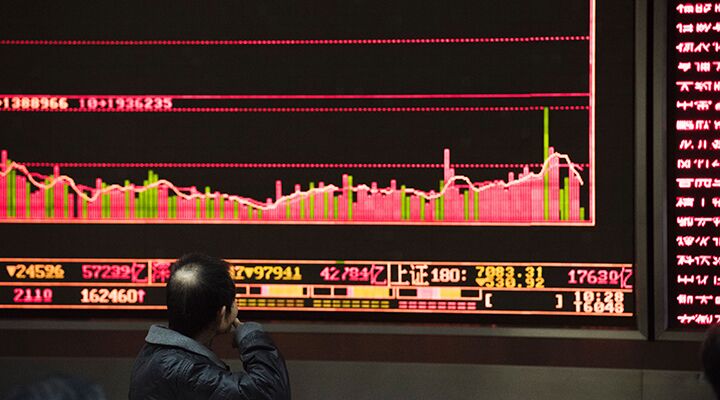
What Was Behind China’s Stock Market Mayhem?
China’s shortest trading day in its 25-year history happened on Thursday, January 7, after automatic circuit breakers kicked in to stop trading in less than 30 minutes. Chinese stocks fell 7 percent, and markets around the world followed suit.
Circuit breakers, which close trading after a 7 percent drop, were introduced into the stock market in December to prevent extreme volatility. They were triggered twice in this year’s first full trading week, on January 4 and 7. Instead of calming the market, they produced the opposite effect. Investors panicked to sell stocks before the market closed.
Aftershocks of the Chinese market drop spread rapidly to Europe and the United States. The Dow Jones Industrial Average and the Standard & Poor’s 500 both fell more than 2 percent on Thursday. Apple and Amazon stocks fell 4 percent and 3.7 percent respectively.
Markets “are in a panic over what’s happening in China,” said Derek Halpenny, European head of global markets research at the Bank of Tokyo-Mitsubishi ufj in London. “People are saying, ‘Whoa, growth is way worse than we were expecting this year.’”
Asian neighbors also suffered. Japan’s Nikkei dropped 2.3 percent. Hong Kong’s Hang Seng Index fell 2.8 percent.
What caused the instability in the Chinese markets? Different analysts proposed a number of reasons. A six-month ban on major shareholders selling stakes in listed companies ended. The manufacturing Purchasing Managers’ Index had been hovering around 48 (below 50 is a contraction) for six months. Growth rates for the gross domestic product fell below 7 percent (and some suspect lower).
Stratfor indicated that the announcement of China’s foreign exchange reserves dropping from $3.4 trillion to $3.3 trillion is the story behind the volatility:
In the second half of 2015, China introduced measures to sustain stock prices, including both capital injections and enforced freezes on selling stock, while trying to maintain its currency peg in order not to spook the markets even more. All of these things cost money, and the funds came from the foreign exchange reserves.
China’s recent stock problems, which are increasingly becoming international problems, are the accumulation of troubles it has been facing this past year. What this means is that a repeat of China’s August currency devaluation is likely to take place.
Keep your eyes on the way China handles its currency. To see where it could lead, read “Currency War: Dragging the World Toward World War III.”
